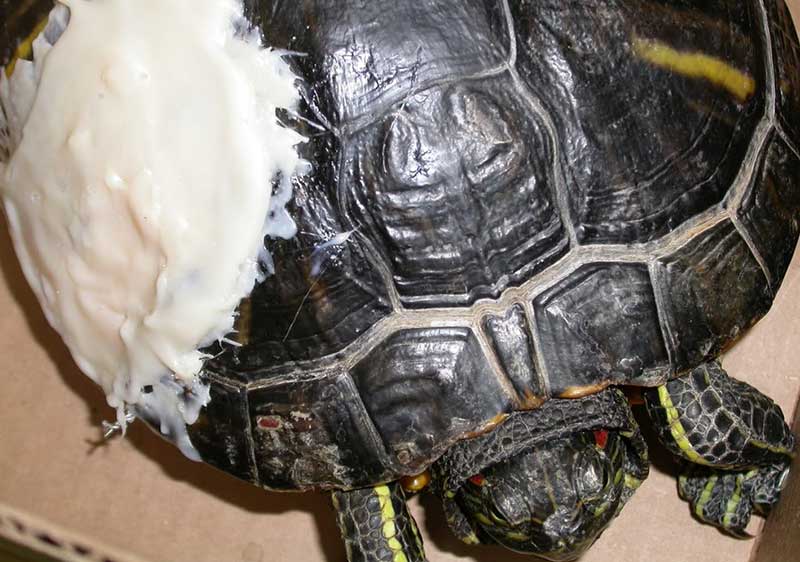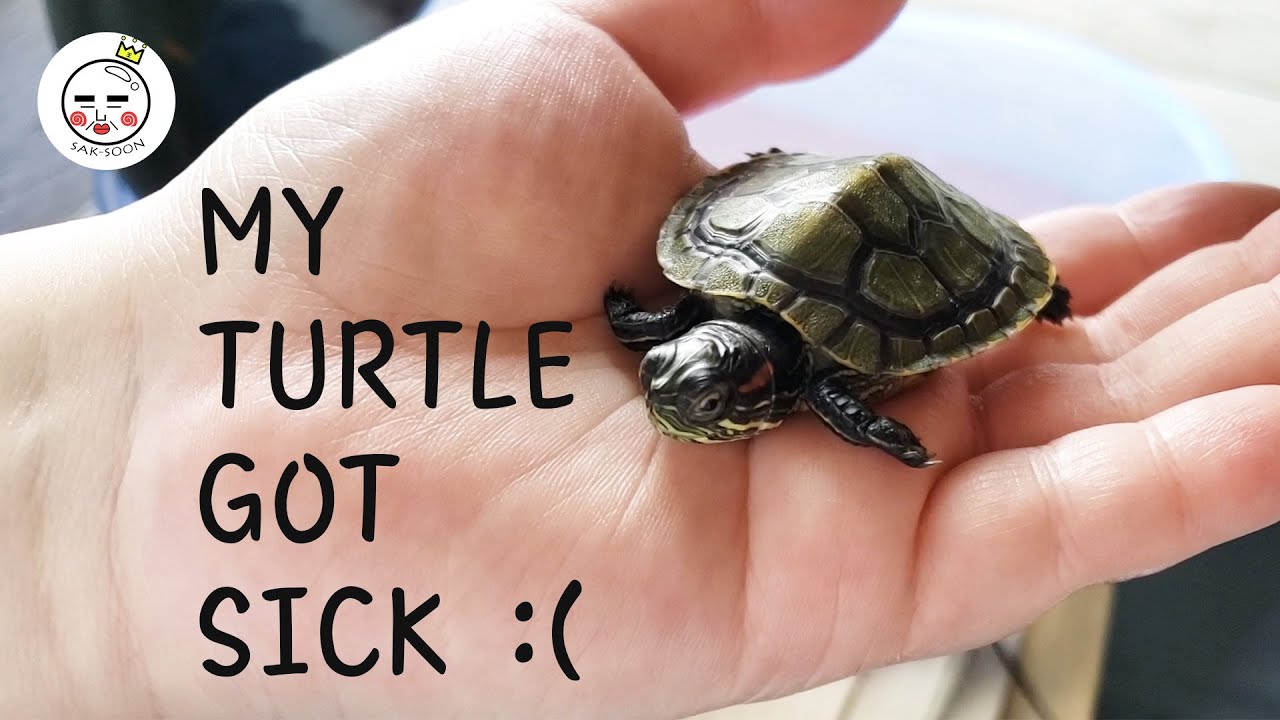To care for a sick turtle, keep it in a warm, clean, and quiet environment. Provide fresh water and proper nutrition.
Caring for a sick turtle is crucial to its recovery and well-being. By creating a suitable habitat and ensuring proper hydration and nutrition, you can help your turtle recover from illness. Pay attention to any changes in behavior or appearance, and consult a veterinarian if necessary.
We will discuss effective ways to care for a sick turtle and promote its health and healing. Whether your turtle is suffering from a common illness or injury, following these care tips can make a significant difference in its recovery process. Let’s explore the essential steps to provide optimal care for your sick turtle.

Credit: www.pinterest.com
Recognizing Signs Of Illness
Recognizing signs of illness in your turtle is crucial for providing timely care and treatment. By observing their behavior, appetite, and physical symptoms, you can identify potential health issues early on.
Unusual Behavior
Turtles may exhibit unusual behaviors when they are sick, such as lethargy, excessive basking, or hiding more than usual. Pay attention to any changes in their activity levels and interactions with their environment.
Changes In Appetite
Monitor your turtle’s eating habits closely. A sudden decrease or increase in appetite can indicate underlying health problems. Keep track of their feeding patterns to detect any significant changes.
Physical Symptoms
Inspect your turtle for any visible physical symptoms of illness, such as abnormal discoloration, shell damage, swollen eyes, or discharge from the nose or mouth. Regularly check for any lumps or bumps on their body.
Creating A Comfortable Environment
To care for a sick turtle, creating a comfortable environment is crucial. Maintain a clean tank with proper heating and lighting. Provide a balanced diet, regular checkups, and a quiet, stress-free space for recovery. Regular monitoring and prompt veterinary care are essential for the turtle’s well-being.
Creating a Comfortable Environment for a sick turtle is crucial to ensure their speedy recovery. As a pet owner, you must provide them with optimal water conditions, proper heat and lighting, and a quiet and stress-free area to rest. Let’s dive into each of these factors in detail.Optimal Water Conditions
Turtles require clean water to stay healthy, and sick turtles need even more attention to their water conditions. Ensure that the water in the tank is free from any pollutants, and the temperature is maintained between 70-80°F. Turtles also need a basking area that is dry and elevated, where they can rest and absorb heat from the light source. You can use a thermometer to check the water temperature and adjust it accordingly.Proper Heat And Lighting
Turtles are cold-blooded animals and require external heat sources to regulate their body temperature. Ensure that the temperature in the tank is consistent, and the basking area has a temperature of 90-95°F. Proper lighting is also essential for turtles to stay healthy. They need UVB lights to produce vitamin D3 and absorb calcium, which is necessary for strong bones and shell growth. Make sure to replace the light bulbs every six months, as they lose their effectiveness over time.Quiet And Stress-free Area
Sick turtles need a quiet and stress-free environment to recover. Avoid placing the tank in a high-traffic area or near a loud noise source. Keep the tank away from other pets and children, and ensure that the turtle has a hiding place to retreat to when they feel stressed. You can also add some plants and decorations to the tank to create a natural environment and help the turtle feel more comfortable. In conclusion, creating a comfortable environment is crucial for the well-being of a sick turtle. By maintaining optimal water conditions, providing proper heat and lighting, and creating a stress-free area, you can help your pet recover quickly and stay healthy. Remember to monitor the turtle’s behavior and consult a veterinarian if you notice any signs of illness.Seeking Veterinary Care
Finding A Reptile Veterinarian
When your turtle is sick, finding a reptile veterinarian is crucial. Research local veterinarians who specialize in treating reptiles, particularly turtles. Look for recommendations from other reptile owners or reptile rescue organizations. Ensure the veterinarian is experienced in treating turtles and is knowledgeable about their specific needs.
Describing Symptoms Clearly
When seeking veterinary care for your sick turtle, it’s essential to describe the symptoms clearly to the veterinarian. Make a detailed list of any changes in behavior, appetite, and physical appearance. Note any abnormal bodily functions or discharge. Providing specific details will help the veterinarian diagnose the problem accurately.
Following Treatment Plans
After seeking veterinary care, it’s important to follow the treatment plan meticulously. Administer any prescribed medications as directed and make sure to keep the turtle’s enclosure clean and maintain the proper environmental conditions. Regularly monitor the turtle’s progress and notify the veterinarian of any changes in its condition.
Administering Medication
Administering medication to a sick turtle requires careful attention to detail and a gentle touch. Proper understanding of the types of medication, correct dosage and administration, as well as monitoring for improvement are essential for the well-being of your pet.
Types Of Medication
When it comes to treating a sick turtle, there are several types of medication that may be prescribed by a veterinarian. These can include antibiotics to combat bacterial infections, antifungal medications to address fungal issues, and anti-parasitic drugs to eliminate internal or external parasites. Additionally, anti-inflammatory drugs may be administered to reduce swelling and pain.
Dosage And Administration
It is crucial to follow the prescribed dosage and administration instructions provided by the veterinarian. Dosage is often calculated based on the turtle’s weight, and the medication may need to be administered orally, topically, or through injections. Always administer medication with precision and care to ensure the turtle’s safety and effectiveness of the treatment.
Monitoring For Improvement
After starting the medication regimen, it’s important to closely monitor the turtle for any signs of improvement or adverse reactions. Keep an eye out for changes in behavior, appetite, and physical condition. If there are no signs of improvement or if the turtle’s condition worsens, consult the veterinarian promptly for further guidance and adjustments to the treatment plan.
Encouraging Hydration And Nutrition
Encouraging hydration and nutrition is crucial for the recovery of a sick turtle. By providing the right techniques and foods, you can help your pet regain strength and improve their overall well-being.
Hydration Techniques
Ensuring that your sick turtle stays hydrated is essential for their recovery. You can encourage hydration through the following techniques:
- Providing a shallow dish of clean, chlorine-free water in the turtle’s habitat.
- Misting the turtle with water to simulate rain and encourage drinking.
- Soaking the turtle in a separate container of lukewarm water for a short period to promote hydration.
Appetite-stimulating Foods
When a turtle is sick, it may lose its appetite. To stimulate their appetite, consider offering the following foods:
- Fresh, live, or frozen aquatic insects such as crickets, mealworms, or earthworms.
- Leafy greens like kale, collard greens, and dandelion greens, which provide essential nutrients and hydration.
- High-quality commercial turtle food, including pellets or sticks that are specifically formulated for turtles.
Balanced Diet
Ensuring a sick turtle receives a balanced diet is vital for their recovery. A balanced diet should include:
- Protein sources such as insects, fish, or lean meats to support muscle repair and growth.
- Fresh vegetables and fruits to provide essential vitamins and minerals.
- Calcium and vitamin supplements as recommended by a reptile veterinarian to address any deficiencies.

Credit: m.youtube.com
Minimizing Stress And Handling
When caring for a sick turtle, minimizing stress and handling is crucial for their recovery. Turtles can easily become stressed when feeling unwell, and excessive handling can exacerbate their condition. By reducing handling, creating a calm environment, and avoiding aggressive tank mates, you can provide the best care for your sick turtle.
Reducing Handling
Minimize handling of a sick turtle to prevent additional stress. Only handle your turtle when necessary for feeding, cleaning, or administering medication. Gentle handling will help to reduce the risk of further distress to the turtle.
Creating A Calm Environment
Maintain a quiet and peaceful environment for the sick turtle. Avoid loud noises, sudden movements, and excessive activity near the turtle’s habitat. Provide hiding spots and a comfortable basking area to promote a sense of security.
Avoiding Aggressive Tank Mates
Ensure that the turtle’s tank mates are non-aggressive species that will not cause stress or harm to the sick turtle. Observe the interactions between the turtle and other tank inhabitants, and separate any aggressive or disruptive individuals to minimize stress.
Promoting Healing And Recovery
Caring for a sick turtle can be a challenging task, but with proper care and attention, your turtle can make a full recovery. Promoting healing and recovery is an essential aspect of turtle care, and this can be achieved through follow-up veterinary visits, physical therapy techniques, and observing for positive changes. Here are some tips to help your sick turtle recover.
Follow-up Veterinary Visits
Regular veterinary checkups are crucial for the health of a sick turtle. Follow-up visits can help the vet monitor the progress of the turtle’s recovery and adjust the treatment plan accordingly. During the visit, the vet will examine the turtle and recommend any necessary changes to its diet, medication, or living conditions. It’s essential to follow the vet’s recommendations to ensure your turtle’s full recovery.
Physical Therapy Techniques
Physical therapy techniques can help promote healing and recovery in a sick turtle. These techniques can include hydrotherapy, massage, and stretching exercises. Hydrotherapy involves placing the turtle in water and allowing it to swim to strengthen its muscles and increase its range of motion. Massage and stretching can help the turtle relax and reduce any stiffness or soreness it may be experiencing. It’s important to consult with a veterinarian before starting any physical therapy techniques to ensure they are safe and appropriate for the turtle’s condition.
Observing For Positive Changes
Observing your turtle for positive changes is critical in promoting healing and recovery. Keep a record of the turtle’s behavior, appetite, and any other changes you notice. If you notice any positive changes, such as increased activity, a better appetite, or improved overall health, this is a good sign that the turtle is on the road to recovery. However, if you notice any negative changes, such as a decrease in activity or appetite, or any other concerning symptoms, contact your veterinarian immediately.
Caring for a sick turtle requires patience, dedication, and attention to detail. By following these tips, you can help promote healing and recovery in your sick turtle and ensure it returns to its happy and healthy self.
Preventing Future Illness
Regular Health Checks: Monitoring your turtle’s health is crucial for early detection of any potential issues.
Maintaining Clean Habitat: A clean environment helps prevent diseases and keeps your turtle healthy.
Balanced Diet and Exercise: Providing proper nutrition and opportunities for exercise are key to your turtle’s well-being.

Credit: redearedslider.net
Conclusion
In caring for a sick turtle, patience and attentiveness are key. By providing proper nutrition, a clean environment, and seeking vet care when needed, you can help your turtle recover. Remember, your turtle relies on you for its well-being, so stay informed and proactive in its care.






Leave a Reply